Flipping the Script: The Inversions Between 2020 and 2025
- Jaime David
- May 2
- 33 min read
Introduction:

The years 2020 and 2025 may seem like just a short span in the grand sweep of history, yet they are bookends of profound societal shifts that have altered the fabric of global politics, culture, and technology. As we look back to 2020, the world was in the midst of a pandemic, rising political tensions, and an uncertain future. Fast forward to 2025, and we find ourselves at the crossroads of a very different reality—one shaped by a second term of the Trump presidency, escalating political violence, shifting global power dynamics, the rise of new media platforms, and rapidly advancing technology.
This post explores the many ways in which these two years stand in stark contrast to each other. From political ideologies to entertainment, the changing role of technology, the rise of new media, and shifts in cultural perceptions, the differences between 2020 and 2025 are stark. Yet, in many ways, these shifts are cyclical, pointing to patterns of societal evolution—both progressive and regressive. In this post, we’ll take a deep dive into these transformations across various sectors, exploring how our world has changed and what the future might hold.
1. Political Shifts: From Hope to Fear

2020: A Hopeful Year for Change
In 2020, the U.S. stood at a crossroads politically. Donald Trump’s first term was nearing its conclusion, and America was deeply divided. The Black Lives Matter movement had sparked widespread protests following the tragic death of George Floyd, marking a pivotal moment in the nation’s reckoning with systemic racism. The pandemic ravaged the world, highlighting stark inequalities in healthcare, economic security, and social services, while the Trump administration's controversial handling of the crisis further deepened the divide.
Despite the looming sense of uncertainty, 2020 also brought a sense of hope. Joe Biden’s candidacy offered a stark contrast to Trump’s divisive policies, promoting a return to unity, democratic norms, and international cooperation. Many saw the 2020 election as an opportunity to restore the soul of America—to reject the growing authoritarian impulses in favor of a more inclusive and equitable future.
The hope for democracy’s restoration in 2020 was not just about voting for a new president, but also about supporting progressive social movements, like LGBTQ+ rights, gender equality, and climate justice. There was a collective sense that the era of right-wing populism was coming to an end and that America could reassert its role as a beacon of freedom and democracy.
2025: A Darker Reality
However, five years later, the political landscape has shifted dramatically. In 2025, Trump’s second term has cemented a more authoritarian grip on power. Despite a series of electoral challenges and increasing questions about the legitimacy of elections, the political system is now heavily manipulated to maintain control. The checks and balances that were once thought to safeguard American democracy have been severely weakened by gerrymandering, voter suppression, and federal overreach.
In 2025, Trumpism is no longer just a movement—it has become institutionalized. Laws restricting voting rights and access to reproductive healthcare have become the norm in many states. Gerrymandered districts now allow for continued Republican control, even as public opinion shifts. The dismantling of democracy has progressed further than many could have imagined just five years ago.
The January 6th Capitol riots, which took place in 2021, were not an isolated incident but a glimpse into the future—a future where violence and undermining democratic institutions become normalized tactics for maintaining power. In 2025, democracy is now fighting for survival, with the authoritarian forces that were once merely simmering now fully entrenched in the nation’s political fabric.
2. The Racial Justice Movement: From Protest to Backlash

2020: The Beginning of a New Civil Rights Era
The murder of George Floyd in 2020 was a pivotal moment in the ongoing struggle for racial justice in America. His death was a catalyst for global protests, as millions took to the streets to demand justice and an end to police brutality. In 2020, racial justice was not just a political issue—it was a moral one. The Black Lives Matter movement grew exponentially, and the call for defunding the police, police reform, and institutional change was louder than ever.
In 2020, there was widespread recognition that systemic racism pervaded every institution—police, education, housing, and healthcare. The hope was that the protests would bring about tangible, long-lasting change. There was a belief that the country could finally address the inequalities that had existed for centuries.
2025: Reversal of Progress
By 2025, the optimism surrounding racial justice has dissipated, replaced by a reactionary wave. The defunding of police movement, which gained momentum in 2020, has largely stalled or been reversed. In many cities, law enforcement has been militarized and empowered with even greater resources, while communities of color continue to face disproportionate violence and discrimination.
Luigi Mangione, the subject of much controversy in 2025, serves as a symbol of this inversion. Rather than holding the perpetrator accountable for a tragic act, supporters rally behind him, portraying the killer as a victim, while the real victim—often marginalized—remains unrecognized. This reflects a growing culture where victim-blaming and justification for violence are normalized. The racial justice movement, once a beacon of hope for true change, now faces a backlash that attempts to erase its relevance and legitimacy.
3. Global Cooperation: From Unity to Isolation

2020: United Against a Common Threat
When the COVID-19 pandemic swept across the world in 2020, it forced countries to confront the undeniable interconnectedness of the world. The pandemic acted as a universal disruptor—affecting every nation, regardless of its political ideology or economic status.
However, 2020 also saw moments of global cooperation. Nations worked together to share resources and medical knowledge. The World Health Organization (WHO) led the charge for vaccine development, and countries agreed to join efforts to mitigate the effects of the virus, despite political tensions.
The hope was that the pandemic would lead to a new era of global solidarity, where countries recognized their shared vulnerabilities and prioritized the common good over nationalist interests.
2025: Nationalism and Retreat
However, by 2025, the idea of global cooperation has all but collapsed. The COVID-19 vaccine was seen as a major success, but distribution was unequal, leaving much of the developing world still struggling to fight the virus. Meanwhile, the long-term economic repercussions of the pandemic have deepened inequality globally.
Countries have turned inward, embracing nationalist policies and isolationist rhetoric. Trade wars are rampant, with tariffs and sanctions replacing diplomatic negotiation. Multilateral agreements have become increasingly ineffective, and the United Nations is now largely a symbolic institution rather than a functional body for global cooperation.
The Russia-Ukraine war, which began in 2022, has exacerbated these divisions, as nations align themselves with either NATO or Russian interests, further entrenching geopolitical lines. The pandemic’s legacy is one of divergence, not convergence, with countries pulling away from one another in an era defined by global fragmentation.
4. Technology: From Progress to Surveillance

2020: Technological Utopianism
In 2020, technology was seen as the harbinger of a brighter future. The world was on the verge of a new age of artificial intelligence (AI), 5G connectivity, and automated industries. The promise was that AI would revolutionize healthcare, education, and business, creating new opportunities and efficiencies for individuals and industries alike. Tech companies were viewed as pioneers—propelling society into a more connected and innovative future.
2025: Control and Surveillance
By 2025, that vision has largely crumbled. The promise of AI has been overtaken by the use of technology for surveillance and control. Instead of liberating society, AI is now used to monitor and manipulate populations, whether through facial recognition software, social media algorithms, or government-backed data collection. Personal privacy has become a thing of the past, as big tech companies and authoritarian regimes increasingly control the flow of information.
The use of two-factor authentication (2FA), once seen as a way to protect user data, has now become a standard feature of a much more controlled environment—where every interaction, online transaction, and personal detail is tracked and stored. Technology has gone from being a tool for progress to a means of control.
5. The Entertainment Industry: From Inclusivity to Commercialization
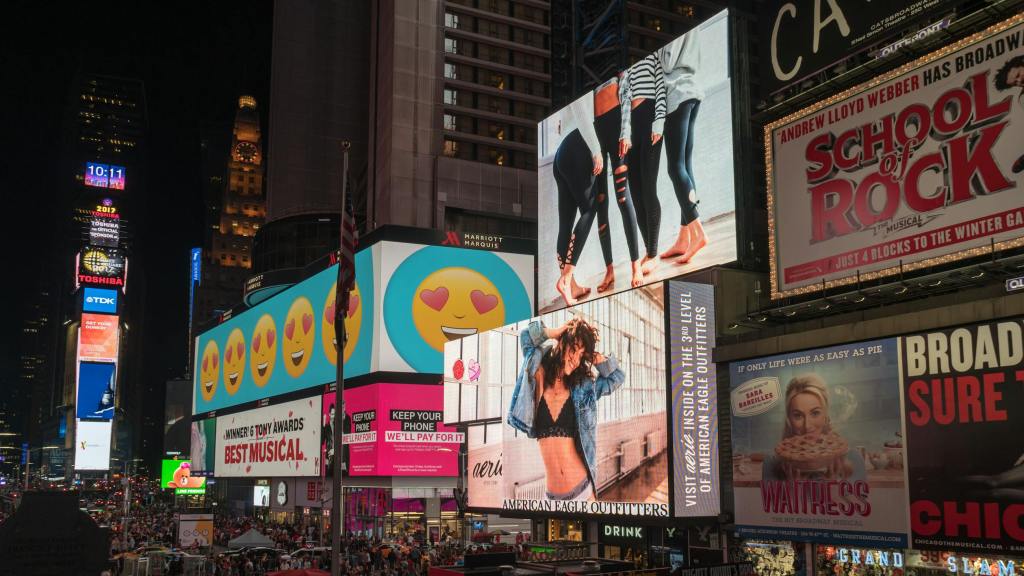
2020: The Rise of Diversity and Representation
In 2020, the entertainment industry was experiencing a renaissance of sorts. Diversity and representation were key issues, with an increasing number of films, TV shows, and media focusing on telling stories that reflected the multiculturalism of society. The #MeToo movement had forced the industry to reckon with its history of misogyny and abuse, leading to significant changes in how Hollywood operated. Inclusive storytelling was seen as not just necessary, but inevitable.
2025: The Corporate Monopoly
By 2025, the entertainment industry has consolidated even more power in the hands of a few major corporations, which control not just the production but the distribution and monetization of content. The push for diversity has largely been co-opted by corporate interests, leading to a superficial form of inclusion that profits off diversity without fundamentally changing the structures of power within the industry.
Streaming services now dominate the entertainment landscape, with Netflix, Disney+, and Amazon Prime becoming the primary distributors of media. The quality of content has often been sacrificed in favor of big-budget franchises, while independent artists and creators face increasing barriers to entry.
6. Entertainment: From Inclusivity to Commercialization
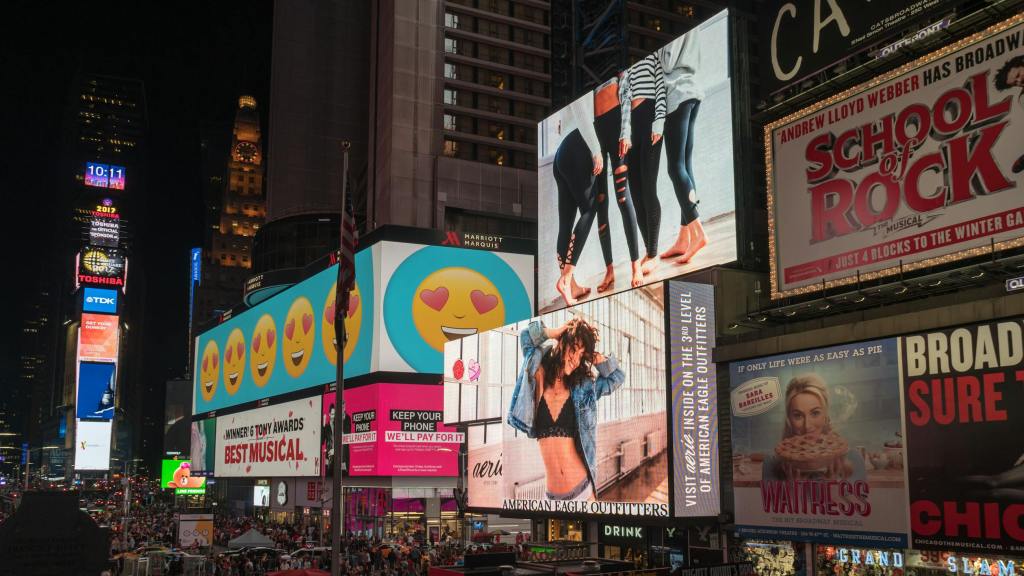
2020: The Rise of Diverse Voices in Entertainment
In 2020, the entertainment industry was undergoing a much-needed reckoning. Social movements like #MeToo and Black Lives Matter brought attention to the deep-rooted inequalities and injustices in Hollywood. The year was marked by a shift toward more inclusive storytelling, where audiences demanded more representation of diverse voices and perspectives on screen. Hollywood responded, albeit in a somewhat performative way at times, by increasing the presence of female directors, LGBTQ+ characters, and racially diverse leads in mainstream films and television shows.
The Black Panther phenomenon from 2018 still loomed large, symbolizing the power of diverse casting and production, but in 2020, there was a concerted effort to push those ideals further. Streaming platforms like Netflix, Amazon Prime, and Hulu began to produce more content that addressed topics such as race, gender equality, and mental health, in ways that resonated with younger, more socially conscious audiences.
Film studios began to take note, and cultural touchstones like Parasite (2019) and The 2020 Oscars pushed the boundaries of representation, showcasing that stories about different cultures and experiences could succeed on the world stage.
2025: Corporate Monopoly and Token Diversity
By 2025, the entertainment landscape had shifted from a push for authentic inclusivity to corporate-driven diversity. What was once a wave of socially conscious storytelling has now largely been commodified. The corporate giants—Netflix, Disney, and Amazon—now own the lion's share of the entertainment market, controlling both production and distribution. As these companies continue to consolidate power, diversity has become more of a marketing tool than a genuine effort to diversify the voices behind the camera.
The push for diverse representation, though still present, has often been reduced to tokenism, where companies feature diverse characters or storylines to appeal to an increasingly conscious and demanding consumer base, without a significant commitment to the underlying issues. The result is that representation in movies, TV shows, and even video games often feels like a check-the-box effort rather than a real investment in diverse talent and storytelling.
7. Culture: From Unity to Division

2020: Collective Efforts Amidst Crisis
In 2020, culture was shaped by the collective crisis that the world faced in the form of COVID-19. The pandemic fundamentally altered the way people interacted with each other and experienced cultural life. Social distancing and lockdowns led to a sharp rise in online cultural activities. People began consuming more digital content—from streaming movies and music to online gaming and virtual events—as they sought to maintain a sense of connection despite physical isolation.
In many ways, 2020 was a year where people turned to shared experiences—whether it was the Black Lives Matter protests, virtual concerts, or socially distanced art events—to find some semblance of solidarity. Despite the barriers, there was a collective push toward social justice and cultural change, symbolized by efforts to support local businesses, small artists, and activists.
2025: Fragmented Cultural Identity
By 2025, however, the sense of collective unity has given way to a more fractured cultural landscape. The polarizing political climate has created a society divided not just along party lines but also along cultural and ideological ones. Culture wars have intensified, with opposing sides fighting over everything from cancel culture to what should be deemed acceptable in the arts.
Globalization, which once brought cultures together, is now seen as a force that has eroded local identities. A rising tide of nationalism and isolationism has led to cultural movements that are rooted in nostalgia for a pre-globalized, pre-pandemic past. In 2025, cultural identities are less fluid and more entrenched in divisive narratives about tradition versus modernity.
8. Music: From Innovation to Nostalgia

2020: Innovation and Collaboration
In 2020, music was still a powerful force for social change. Artists from Billie Eilish to The Weeknd were pushing the boundaries of genre, blending styles from hip hop and electronic music to create something fresh. Music streaming platforms like Spotify and Apple Music allowed for more access to diverse artists, and social media provided a platform for up-and-coming musicians to bypass traditional industry gatekeepers.
2020 saw a surge of collaborations between artists, both within and across genres, reflecting the changing nature of the industry. Virtual concerts became a new way to engage with fans amid the pandemic, with artists experimenting with live-streamed performances that reached global audiences. Music was a balm for the soul, a form of resilience against the hardships of the year.
2025: Commercialization of Music
By 2025, the music industry had evolved into an even more commercialized and corporate-dominated entity. The days of independent artists breaking through the traditional barriers were increasingly rare, as streaming platforms and major record labels controlled the access to listeners. Music was less about innovation and more about maximizing profits, with algorithms shaping what people listened to and pushing listeners toward safe, tried-and-true formulas.
Virtual concerts and NFTs have become major profit centers, often overshadowing the need for authentic human connection. The once-vibrant culture of music as an expression of rebellion, protest, and creativity now feels like a commodity that can be bought and sold like any other.
9. Gaming: From Escape to Mainstream

2020: The Rise of Online Gaming
In 2020, gaming became more than just a hobby; it became an essential form of social interaction. With lockdowns and social distancing measures in place, people turned to online games to stay connected with friends and family. The release of games like Animal Crossing: New Horizons became a cultural phenomenon, providing an escape from the reality of the pandemic while also fostering a sense of community.
Online gaming communities were more inclusive, with streaming platforms like Twitch and YouTube allowing players to share their experiences and interact with others. Gamers were more connected than ever before, and the gaming industry experienced a boom that made gaming a central part of daily life for millions of people.
2025: Mainstream and Monetized
By 2025, gaming had reached an even more mainstream status, but at a cost. The lines between traditional gaming and eSports had blurred, with gaming increasingly seen as a form of entertainment akin to sports broadcasting. The industry became more focused on monetization—with loot boxes, in-game purchases, and subscription models taking precedence over gameplay innovation.
While some traditional games still thrive, the industry’s focus has shifted toward corporate sponsorships and pay-to-play systems, leading to a more profit-driven experience. Gaming as a form of escape and creativity is now often overshadowed by the need to monetize every interaction.
10. Technology: From Innovation to Control
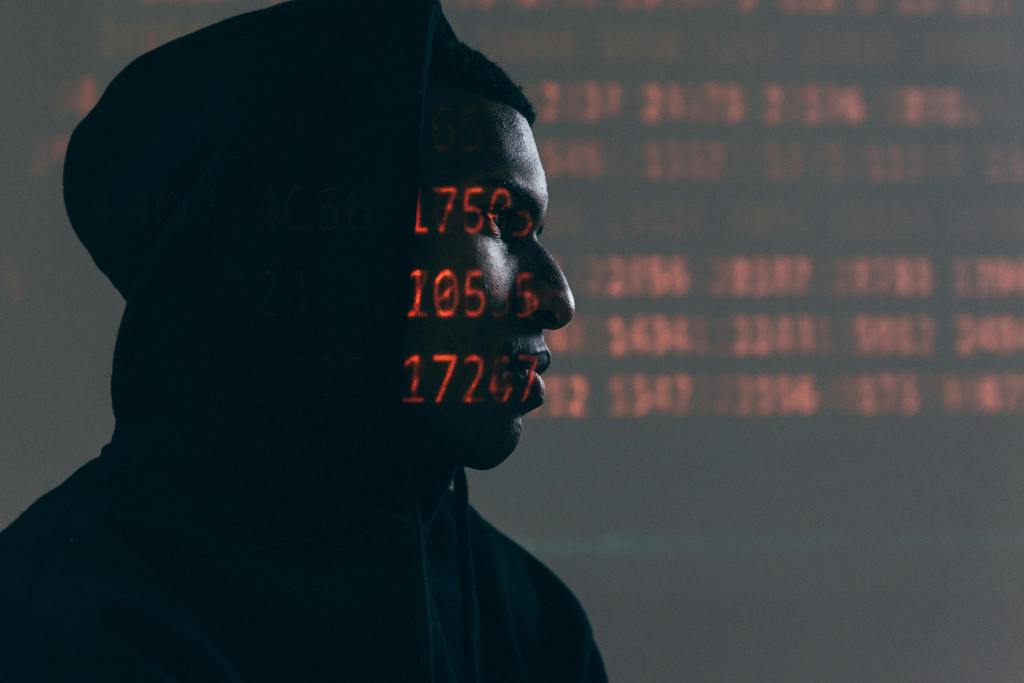
2020: The Dawn of Smart Living
In 2020, technology was still seen as a tool for progress. The world was beginning to see the true potential of technologies like AI, 5G, and IoT. Smart homes, automated cars, and health tech were making their way into daily life, promising greater efficiency, convenience, and personalization.
Consumers were excited about the prospect of being able to integrate technology into their everyday lives to improve everything from healthcare to transportation. The explosion of cloud computing and big data seemed to offer the promise of a more connected world where technology would make life easier and more efficient.
2025: The Surveillance State
By 2025, however, technology’s role has shifted dramatically. While some of the innovations promised in 2020 have materialized, they have come with a heavy price: privacy. The advent of 5G and AI has allowed for even greater surveillance, with facial recognition and data collection being implemented across the globe.
Social media platforms have become tools of manipulation, not just entertainment. Algorithms are now a central part of how people interact with technology, dictating everything from what news they read to what products they buy. Instead of creating a utopia, these advancements have led to a society where personal data is harvested at every turn, and individual freedoms are increasingly restricted.
11. YouTube: From Passion to Monetization
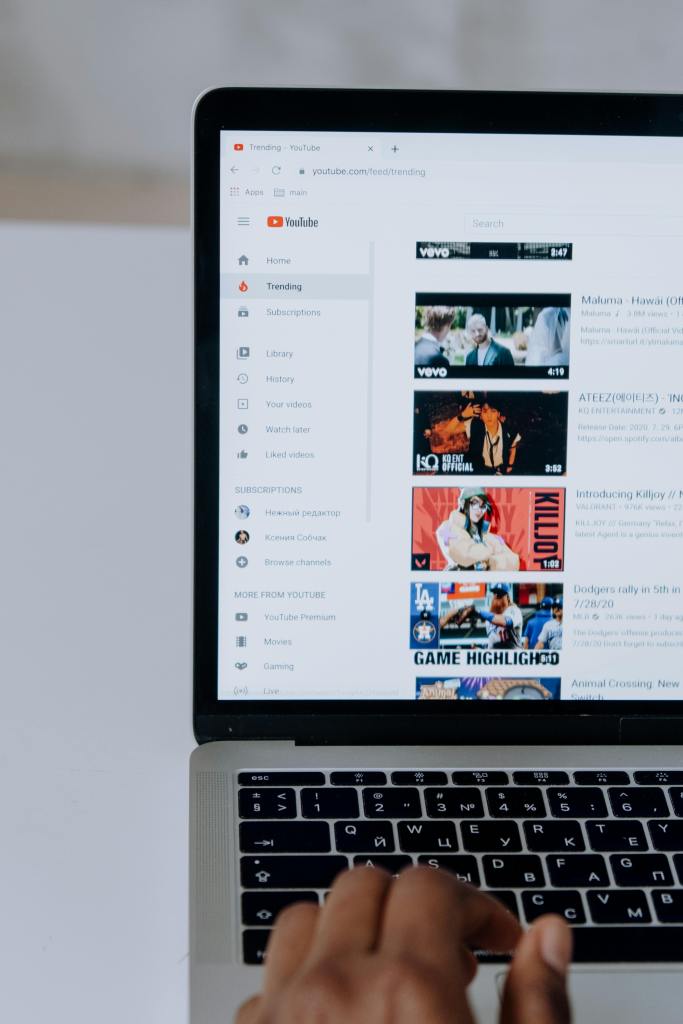
2020: The Rise of DIY Content
In 2020, YouTube was a vibrant platform for creators to share their passions. Whether it was educational content, vlogging, or gaming, YouTube provided a space for people to showcase their talents and build communities. The appeal of YouTube was its authenticity, with creators able to communicate directly with their audiences without the constraints of traditional media.
YouTube was also the go-to platform for self-expression and innovation, with content creators using the platform to challenge norms, showcase new ideas, and spark social change.
2025: Corporate-Driven Content Creation
By 2025, however, YouTube has become a corporate entity where the focus is on monetization and advertising. The algorithm now favors content that generates the most views and clicks, often prioritizing viral trends or mainstream content over innovative or niche creators. The platform has shifted from a space for self-expression to a vehicle for brands to market their products and services.
Creators are more likely to face pressure to brand themselves and conform to corporate interests in order to stay relevant. YouTube, once the epitome of DIY culture, has now become just another arm of the global media machine.
12. Cryptocurrency: From Revolutionary to Volatile
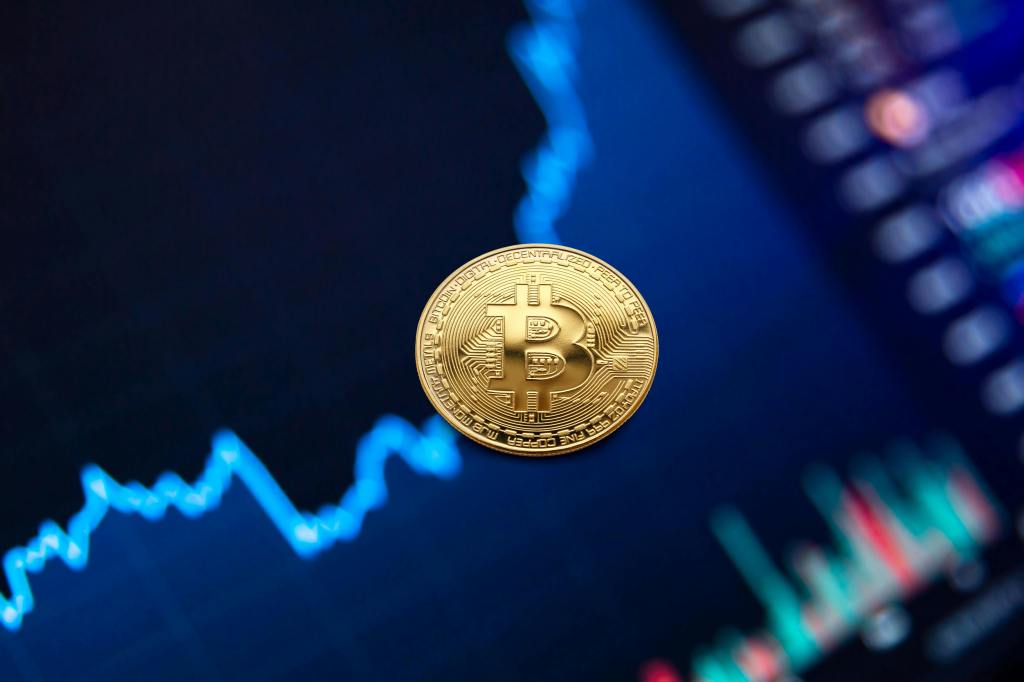
2020: The Rise of Decentralized Finance
In 2020, cryptocurrency was still viewed by many as a revolutionary tool that could disrupt traditional financial systems. Bitcoin, Ethereum, and other altcoins saw significant interest as more people became intrigued by the decentralized nature of digital currency. The allure of blockchain technology, coupled with the promise of financial autonomy and freedom from central banks, led to a rise in crypto investments. DeFi (Decentralized Finance) platforms also began to gain traction, offering people the ability to engage in lending, borrowing, and trading without relying on traditional financial institutions.
The pandemic played a pivotal role in the popularity of cryptocurrency. As central banks around the world printed money to deal with the economic downturn, concerns about inflation and the devaluation of fiat currency led many to see crypto as a hedge against traditional markets. People flocked to Bitcoin as "digital gold" and began to explore altcoins as well, fueling a speculative boom. NFTs (Non-Fungible Tokens) also began to gain prominence as a means of digitizing ownership of art, collectibles, and other assets.
2025: The Collapse of the Illusion
By 2025, cryptocurrency has evolved into a much more volatile and regulatory environment. What was once considered a disruptive force has now become a high-risk, high-reward investment, with market crashes and extreme fluctuations becoming commonplace. Governments worldwide have begun to implement stricter regulations on cryptocurrency, particularly regarding taxation, money laundering, and consumer protection.
The rise of centralized stablecoins and CBDCs (Central Bank Digital Currencies) has started to overshadow the original vision of decentralized finance. While blockchain technology itself is still seen as revolutionary in various applications, cryptocurrencies are often viewed with skepticism, especially after high-profile scandals like the collapse of major crypto exchanges, pump-and-dump schemes, and rug pulls that have left many investors with significant losses.
What was once a promising alternative to the financial system is now seen as a gamble—a space for speculators rather than the masses seeking financial freedom. The lack of regulation has made the space ripe for fraud and exploitation, and many consumers have grown disillusioned with the cryptocurrency dream.
13. Side Hustles: From Empowerment to Burnout

2020: The Surge in Gig Economy
In 2020, the gig economy and side hustles became a significant part of the American workforce. As millions lost their jobs due to the pandemic, people turned to alternative sources of income in droves. The rise of platforms like Uber, DoorDash, TaskRabbit, and Etsy allowed individuals to leverage their skills and assets for extra cash. Whether it was delivering food, freelance writing, or selling handmade goods, side hustles provided a sense of empowerment and an opportunity to gain financial independence in uncertain times.
The pandemic, coupled with widespread remote work, shifted the cultural narrative around side hustles, making it more common for people to work multiple jobs or start small businesses. The idea of the hustler mindset—where anyone could start a business or freelance gig—became a key part of the American dream. Podcasts, books, and YouTube channels dedicated to entrepreneurship surged in popularity, with influencers promoting the idea of personal success through the gig economy.
2025: The Dark Side of Hustling
By 2025, the romanticism surrounding side hustles has started to wear off, revealing the inherent downsides. The idea of working multiple jobs to achieve financial independence has become synonymous with burnout. What was once empowering is now a grueling and often unsustainable reality for many. The shift to remote work has made it harder to establish boundaries between personal and professional life, and many workers are left juggling several gig jobs just to make ends meet.
Gig economy workers are more precariously employed than ever, without benefits like health insurance, paid time off, or job security. Workers are finding themselves exploited by platforms that take a significant cut of their earnings, leaving them with little financial stability. While side hustles may have provided a temporary financial cushion during the pandemic, by 2025, they have contributed to a growing underclass of workers who are unable to save or invest in their futures.
Moreover, the rise of AI-driven automation and outsourcing has made many of these jobs even harder to sustain, leading to higher competition and even lower pay for tasks that once were lucrative. The hustle is no longer a pathway to success—it’s a trap that keeps people stuck in a cycle of overwork and financial instability.
14. Housing Market: From Boom to Crisis

2020: A Hot Housing Market Amid Uncertainty
In 2020, the housing market in the U.S. was caught between the pandemic-induced recession and a surge in demand. Despite initial fears that the housing market would collapse, it was actually one of the few sectors that saw significant growth during the pandemic. Record-low mortgage rates encouraged people to purchase homes, even in the face of economic uncertainty. As people were forced to spend more time at home, many began to reevaluate their living situations, with a shift toward suburban and rural areas, where larger homes with outdoor spaces were more affordable than city apartments.
Simultaneously, there was a growing trend toward remote work, which led many individuals and families to leave major metropolitan areas in search of more affordable living. The demand for homes in smaller towns and cities skyrocketed, pushing home prices up. The market was marked by fierce competition and bidding wars, making it a seller's market across much of the country.
2025: A Market on the Brink of Collapse
By 2025, the housing market has become a bubble teetering on the edge of collapse. While prices initially soared due to low interest rates, a series of interest rate hikes by the Federal Reserve to combat inflation has caused mortgage rates to skyrocket. Homebuyers who were once able to secure affordable mortgages now find themselves locked out of the market, unable to afford the inflated prices.
Renting has also become increasingly unaffordable, particularly in urban areas, as the supply of rental units is far outstripped by demand. The housing crisis is no longer just a matter of high prices—it has also become a supply issue, with a lack of new construction due to rising material costs and labor shortages. People are forced to make hard choices between renting or buying in a market where prices continue to climb, making it impossible for first-time buyers to enter.
Meanwhile, the housing market bubble has left many feeling financially insecure, with the risk of foreclosures looming for homeowners who were lured into high-risk adjustable-rate mortgages. The market is no longer a place where individuals can build wealth—it has become a speculative venture that benefits only the wealthy and large corporations. Real estate investment trusts (REITs) and private equity firms have taken over much of the market, further alienating average Americans from homeownership.
15. Views on Relationships and Being Single: From Romance to Realism

2020: The Era of Idealized Love and Online Dating
In 2020, romantic relationships and the concept of love were largely influenced by idealized portrayals in pop culture, social media, and online dating apps. The pandemic, which forced millions into quarantine, saw a sharp increase in online dating activity, as people sought connection during a time of isolation. Platforms like Tinder, Bumble, Hinge, and OkCupid boomed as a result of social distancing measures, with people turning to technology to find companionship amid a global crisis.
The shift to digital communication, however, also led to the rise of a new era of romance characterized by an oversaturation of idealized narratives and performative relationships. Social media influencers often presented the perfect relationship as a lifestyle to aspire to—highlighting flawless dates, #CoupleGoals, and the dream of eternal love. This created a pressure to conform to these ideals, whether through constantly sharing moments of relationship bliss or trying to live up to the unattainable standards set by influencers and reality TV.
At the same time, the pandemic accelerated the conversation about self-love and self-care. People were forced to spend more time with themselves, and many began reflecting on their personal needs and desires in relationships. This led to an increase in conversations around toxic relationships and the importance of emotional health. For some, the isolation of 2020 prompted a reevaluation of romantic ideals and sparked a rise in people choosing solo journeys, seeing singlehood not as a deficiency but as a path to self-discovery and empowerment.
2025: The Realities of Modern Romance and the Pressure to "Find Someone"
By 2025, the landscape of relationships has dramatically shifted, as the romantic ideals of 2020 have collided with reality. While online dating continues to be a dominant force in modern love lives, the pressure to find "the one" has only increased, especially with the prevalence of algorithms that seek to match people based on personality traits and compatibility. The quest for perfection in romantic partners has reached new extremes, with many now turning to specialized apps or AI matchmaking services to maximize their chances of meeting someone who checks all the boxes.
Social media continues to perpetuate the notion of ideal relationships, but this has resulted in greater disillusionment for many. The rise of influencers’ highly curated lives has led to an increasing sense of disconnect from reality, with many people now experiencing relationship fatigue. The desire for genuine connection is often overshadowed by the pressure to perform the “perfect” relationship online, resulting in feelings of inadequacy and loneliness despite being in a relationship or having a significant following.
For single individuals, the past few years have been an emotional rollercoaster. While 2020 saw a growing acceptance of solo living and embracing singlehood, by 2025, this mindset has been met with a growing cultural backlash. The pressure to be in a relationship has returned with a vengeance, fueled by a fear of missing out (FOMO), coupled with the normalization of partnered status as a metric of success. Pop culture, especially romantic movies and TV shows, continues to present romantic relationships as the ultimate goal in life. This puts additional stress on those who are single, leading to a societal expectation that happiness and fulfillment are tied to having a partner.
Moreover, the economic pressures of the post-pandemic world have also shifted the way relationships are viewed. Financial insecurity, caused by inflation, job loss, and housing crises, has altered the way many approach relationships and marriage. In a world where financial stability is more precarious, people are now thinking more practically about what a partner can offer in terms of security, support, and shared responsibilities. There is also an increasing recognition that emotional labor—balancing personal needs, career ambitions, and family expectations—has become an ongoing challenge in romantic partnerships.
This has led to an evolution in dating trends. While traditional dating is still popular, there is a growing interest in non-traditional relationships such as polyamory, open relationships, and platonic partnerships. These forms of relationships are increasingly seen as legitimate alternatives to the traditional monogamous model, allowing people to navigate their emotional needs in ways that are more flexible and less confined to societal expectations.
Meanwhile, there is also an increase in the concept of intentional singlehood. Many individuals in 2025 are prioritizing their careers, mental health, and personal growth, recognizing that being single doesn't equate to being lonely or incomplete. Communities for single individuals—whether centered around travel, wellness, or personal development—are flourishing, as people seek connection not through romantic partners, but through shared experiences and common interests.
The Rise of Technology in Shaping Relationships
Another key shift has been the increasing role of technology in shaping how we experience love and intimacy. By 2025, the idea of virtual dating, AI companions, and metaverse relationships has entered the mainstream. Online platforms now integrate virtual reality (VR) and augmented reality (AR) to help people date in more immersive, interactive environments, bypassing geographical barriers. There are even AI-driven bots that simulate human interactions, offering companionship to those who are lonely or seeking specific types of emotional support.
While these developments offer an exciting new way to connect, they have also raised important questions about the authenticity of human connection. Many people are now concerned about emotional isolation and the dehumanization of relationships due to technology, particularly as virtual relationships become more commonplace.
16. The Changing Landscape of Content Consumption: From Longform to Shortform and Everything In Between

2020: The Golden Age of Podcasts, Video Essays, and Iceberg Videos
In 2020, there was a massive surge in the consumption of longform content, particularly podcasts and video essays, as more people were confined to their homes during the pandemic. With time on their hands, audiences turned to deeper, more thoughtful content that provided in-depth analysis, commentary, and storytelling. The podcasting industry exploded, with shows on virtually every topic imaginable—from politics and society to entertainment and personal development. Podcasts became a significant source of education and entertainment, offering a more personalized and intimate form of media consumption.
For many, podcasts were not just a source of entertainment, but also a way to connect with niche communities, learn new things, and expand their worldviews. Shows like "The Daily" by The New York Times, "My Favorite Murder", and "Joe Rogan Experience" drew millions of listeners, covering topics from current events to true crime to self-help. The accessibility of podcasts—available on nearly every device and platform—meant that anyone could produce and share their thoughts, further democratizing the media landscape.
Simultaneously, video essays—long-form, analytical videos exploring topics in great depth—became increasingly popular on platforms like YouTube. Creators like ContraPoints, Philosophy Tube, Lindsay Ellis, and Super Bunnyhop garnered massive followings, offering nuanced perspectives on everything from philosophy and politics to film analysis and pop culture. Video essays offered an intellectual appeal, combining visual elements with thoughtful commentary to present complex ideas in an easily digestible yet deeply informative format.
Another genre that saw significant growth in 2020 was iceberg videos. These videos, typically produced for YouTube, took viewers on a journey into obscure or underexplored topics, providing a deep dive into hidden layers of culture, internet phenomena, or even conspiracy theories. The appeal of iceberg videos lay in their ability to introduce audiences to unknown corners of the internet or niche topics, presenting information in a layered, "top to bottom" manner that was both captivating and informative. Channels like T1J and Buzzfeed Unsolved pioneered this genre, captivating audiences who were eager for hidden knowledge.
2025: The Shift to Shortform, TikTok, and the Decline of Longform Content
Fast forward to 2025, and the digital landscape has dramatically shifted. While podcasts and video essays are still prevalent, the rise of shortform content—especially on platforms like TikTok, Instagram Reels, and YouTube Shorts—has fundamentally changed how people consume media. Attention spans have become shorter, and users increasingly demand content that is quick, easily digestible, and often, highly shareable.
TikTok, in particular, has become the dominant social platform in 2025, with its algorithm-driven feed offering an endless stream of snappy, often viral content. In 2020, TikTok was already gaining steam as a platform for dance trends, lip-syncing, and humorous short videos. By 2025, it has evolved into a content powerhouse for everything from political commentary and fashion to life hacks and cooking tutorials. The appeal lies in its highly engaging and interactive format, where videos rarely exceed 60 seconds, allowing creators to condense their ideas into fast-paced, punchy clips.
Instagram Reels and YouTube Shorts have followed suit, and shortform content has become ubiquitous across all major platforms. While this shift toward bite-sized content is undeniably entertaining and allows for a quick laugh or a moment of escapism, it has also contributed to a decline in longform content consumption. The demand for fast, visual stimulation has changed the way creators produce content, and the depth of analysis and nuanced conversation often present in podcasts and video essays is now condensed into much more compact, easily shareable snippets.
This rise of shortform content has also led to the fragmentation of media. No longer do we gather in the same places to engage with longform content. Instead, we hop from one platform to another, consuming videos in 15-second bursts, diving into viral trends, and scrolling endlessly through an algorithmically curated feed of brief, attention-grabbing clips. As a result, the focus on instant gratification has overshadowed the sustained, immersive engagement of podcasts or video essays.
Why It Matters: The Culture of Fast and Slow Content
The shift from longform to shortform content is not just a matter of technology or platform preference; it’s a reflection of changing cultural values and behaviors. The speed at which we consume information has accelerated, and with it, our expectations for the content we engage with. While longform content still has a place, especially for those seeking more thoughtful or in-depth explorations of ideas, the current trend suggests that brevity is now favored over depth.
This cultural shift mirrors the general pace of modern life. Information overload, constant connectivity, and the influx of data have made it difficult for many to focus on long-form pieces without feeling distracted. Podcasts and video essays still offer value, but their audiences have become more niche, composed of individuals who are willing to engage with complex topics for longer periods.
In contrast, shortform content has democratized the creation and sharing of entertainment, lowering the barrier to entry for creators. With platforms like TikTok, anyone can become a viral sensation with just a few seconds of captivating content. It’s a space where humor, trends, and creativity flourish at an exponential rate, making it impossible to keep up with every viral video or meme.
The Future of Content, Creation: Will Longform Make a Comeback?
Looking ahead to the future, it’s unclear whether the current dominance of shortform content will be a permanent shift. There is a growing recognition that the rapid consumption of content comes at a cost—many people feel overwhelmed, overstimulated, and unable to process the information they consume. As society becomes more attuned to the importance of mental health and mindful consumption, there may be a resurgence in demand for content that encourages reflection, critical thinking, and longer engagement.
In fact, hybrid formats—combining elements of both longform and shortform content—could become a dominant trend. Imagine podcasts with bite-sized episodes or video essays that incorporate interactive shortform clips, blending the quick enjoyment of TikTok with the intellectual depth of a well-researched video essay. Platforms that can balance both worlds—catering to those who want quick entertainment and those who seek deeper insights—could define the next era of content creation.
This section discusses how content consumption has evolved over the past few years, particularly the shift from longform content like podcasts, video essays, and iceberg videos, to the dominance of shortform content such as TikTok videos, Instagram Reels, and YouTube Shorts. The rise of shortform content has transformed how we engage with media, often prioritizing quick entertainment over in-depth analysis. The longterm impact of this shift remains to be seen, but it's clear that the culture of content creation is continuously adapting to the ever-changing demands of modern audiences.
17. Vigilantism and Political Violence: 2020 vs. 2025

2020: Rising Tensions and the Specter of Vigilantism
In 2020, the political landscape in the United States was marked by intense social unrest, widespread protests, and a growing polarization between various factions. The tragic death of George Floyd sparked massive protests across the country, with millions of people marching to demand justice for victims of police violence, particularly Black Americans. These protests, led by movements like Black Lives Matter, were met with a heavy-handed response from local and federal law enforcement. Images of police brutality, military-style tactics, and violent clashes between protesters and the police became symbols of a nation in turmoil.
Amid this unrest, vigilantism began to emerge as a troubling response to perceived chaos. One of the most notable incidents was the shooting deaths of two protesters in Kenosha, Wisconsin, by 17-year-old Kyle Rittenhouse, who claimed he was acting in self-defense while protecting businesses during protests. His case became a flashpoint for debates about gun rights, self-defense, and the role of ordinary citizens in situations involving civil unrest. While Rittenhouse was eventually acquitted, the episode highlighted the rising acceptance of vigilante actions in response to protests and political violence. His actions were defended by some as necessary to restore order, while others saw it as an example of far-right extremism weaponizing the frustrations of a divided America.
Beyond Kenosha, right-wing militias and armed groups appeared on the scene, positioning themselves as defenders of order in cities facing large-scale protests. The presence of groups like the Proud Boys, Boogaloo Boys, and Three Percenters showed how political violence could escalate into organized, ideologically driven confrontations. These groups, some of which openly advocated for political violence and the overthrow of the government, gained more prominence throughout 2020, as tensions over issues like racial justice, gun control, and election integrity dominated national discourse.
At the same time, left-wing activists also engaged in confrontational tactics, though they were less organized and often in response to police violence. The most notable example was the autonomous zone in Seattle, known as the CHOP (Capitol Hill Organized Protest), where demonstrators declared a part of the city a "police-free" zone. While this area was short-lived, it became a symbol of anarchist-inspired resistance and an example of the types of political violence and unrest that defined much of 2020.
2025: The Normalization of Political Violence and Vigilantism in the Political Mainstream
By 2025, the situation regarding vigilantism and political violence has significantly escalated, reflecting broader shifts in American culture and politics. The continuing rise of far-right extremism and organized political violence has been compounded by the ongoing polarization of the political system, which, in many ways, has deepened under the second term of President Donald Trump.
In 2025, vigilantism has become more normalized, particularly among certain factions of the population who view themselves as the last line of defense against what they perceive as an increasingly illegitimate government or a threat to their way of life. Armed militias and right-wing extremist groups are now openly engaged in acts of political violence, often targeting progressive movements, minority communities, or government institutions they consider "enemies." These groups, emboldened by years of political rhetoric that has increasingly demonized their opponents, have moved beyond sporadic clashes and now see themselves as mainstream political actors.
One of the most concerning developments has been the increasing use of social media to organize acts of violence and rally support for vigilantism. Platforms like Telegram, Parler, and 4chan have become hubs for the radicalization of young men and women who feel alienated from the political system. Memes and call-to-action posts encouraging violence against perceived enemies have become commonplace, feeding a sense of justified rebellion that appeals to individuals across the political spectrum.
In 2025, the political violence that once seemed marginal has now crept into the mainstream. Acts of political terrorism—such as bombings, assassinations, or attacks on government infrastructure—have become more frequent and sophisticated. These acts are often attributed to groups with ultra-nationalist, fascist, or anti-government ideologies, and they are met with a disturbing level of support from certain segments of the population. The violence isn’t just confined to fringe extremists anymore but has become a catalyst for mainstream political movements that aim to challenge the state through non-democratic means.
On the other side, some progressive factions have also resorted to more militant activism as the growing dominance of corporate oligarchs and the erosion of democratic institutions continue. While left-wing groups are less prone to violent uprisings than their right-wing counterparts, there has been a rise in direct action groups that engage in civil disobedience, property destruction, and even armed resistance in rare instances. This violence is largely in reaction to the perceived injustices of the system: inequality, police brutality, corporate greed, and a growing oligarchic state. However, unlike their right-wing counterparts, left-wing militant groups remain relatively fragmented and decentralized, though they, too, have felt emboldened by the political atmosphere.
The Danger of Political Violence and Vigilantism in 2025
The growing acceptance of vigilantism and political violence in 2025 is a direct reflection of the breakdown of trust in democratic institutions. When citizens begin to view the state as corrupt or unresponsive, the desire for self-justice becomes more appealing. The consequence of this mindset is that individuals or groups feel justified in taking the law into their own hands, whether it’s through violent confrontation, armed resistance, or targeted attacks on government officials and activists.
In this environment, it’s important to recognize that vigilantism and political violence rarely remain isolated. As they spread, they infect entire communities, leading to fear, instability, and the erosion of democratic norms. Public discourse becomes more polarized, with both sides of the political spectrum retreating into echo chambers of rhetoric and increasingly violent actions.
The normalization of such violence can fundamentally change the fabric of American democracy. If political violence continues to escalate unchecked, it could pave the way for the breakdown of the rule of law and the rise of authoritarian dictatorship, where power is not determined by the ballot box, but by the barrel of a gun.
18. The Rise of Fringe Right-Wing Politics: 2020 vs. 2025

In 2020, the fringe right-wing movement was largely relegated to the fringes of the internet, social media, and select pockets of conservative subcultures. Online platforms like 4chan, 8kun, and Reddit served as breeding grounds for the rise of radical QAnon conspiracies, anti-mask and anti-vaccine sentiments, and overt white nationalist ideologies. These groups found increasing visibility through memes, viral content, and far-right influencers, who would occasionally take their message to college campuses or small gatherings.
By 2025, however, these fringe right-wing ideas have made their way into the mainstream, becoming a central pillar of national discourse. Political figures, including members of Congress, have openly embraced or tacitly supported far-right ideologies that were once confined to online forums. QAnon has evolved from a fringe conspiracy theory to a cultural phenomenon with a loyal following among mainstream conservative voters. While 2020 saw these ideologies dismissed as the work of a small, extremist minority, by 2025, they have significantly influenced Republican politics and the American right-wing.
Online spaces and platforms like Telegram or Truth Social have fostered a shift from college campuses to the mainstream, where these views are no longer marginalized but actively debated and defended in public spaces. The normalization of far-right rhetoric in politics and media underscores a significant cultural shift.
19. Woke Culture: Hysteria in 2020 vs. 2025
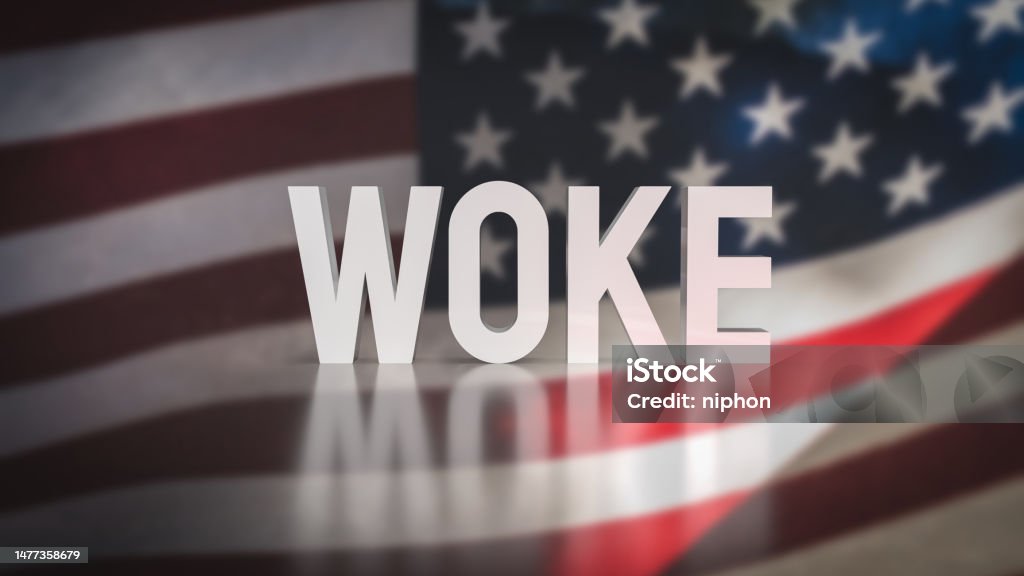
Woke culture was initially celebrated in 2020 as an awareness movement, focused on social justice issues, and the fight for equity and inclusivity. It emphasized issues like racial justice, gender rights, and disability access, and a majority of younger generations embraced the cause.
By 2025, however, woke culture has become polarizing, evolving into what some critics now refer to as an overzealous and performative form of activism. While social justice and inclusivity remain important, many have argued that some aspects of woke culture have gone too far, with movements pushing for censorship, and cancel culture gaining traction. This has led to a backlash from conservatives and moderates, who view it as a threat to free speech, and an oppressive moral framework that stifles discussion.
A culture that once centered around fostering inclusion now faces increasing scrutiny for the hypocrisy of certain movements and the canceling of anyone perceived to be in violation of these values.
20. The Shifting Perception of Celebrities: 2020 vs. 2025
In 2020, celebrities were still seen as icons or role models—people whose opinions and lifestyles could set trends and sway public opinion. Celebrities like Kanye West, Will Smith, and R. Kelly were once admired figures, but as scandals have emerged, public perception has shifted dramatically.
By 2025, celebrity culture is more scrutinized than ever, as the dark side of fame becomes harder to ignore. Kanye West, once celebrated for his musical genius, has faced mental health crises, controversial statements, and accusations of antisemitism. His public meltdown and subsequent fallout have forced society to reconsider the idolization of celebrities. Similarly, R. Kelly—once an iconic figure in the music world—has been convicted of sexual abuse charges, leaving fans grappling with the complexity of separation between the artist and the art. Similarly, Will Smith—once the face of family-friendly Hollywood—found himself at the center of controversy after the infamous Oscar slap incident, where he slapped Chris Rock during the 2022 Academy Awards. While Smith’s behavior was widely condemned, it also shed light on the tensions within the celebrity world.
At the same time, public outrage over Chris Rock’s jokes about Smith's wife, Jada Pinkett Smith, sparked broader conversations about toxicity, misogyny, and defensive masculinity in Hollywood.
21. YouTube: From Niche to Mainstream
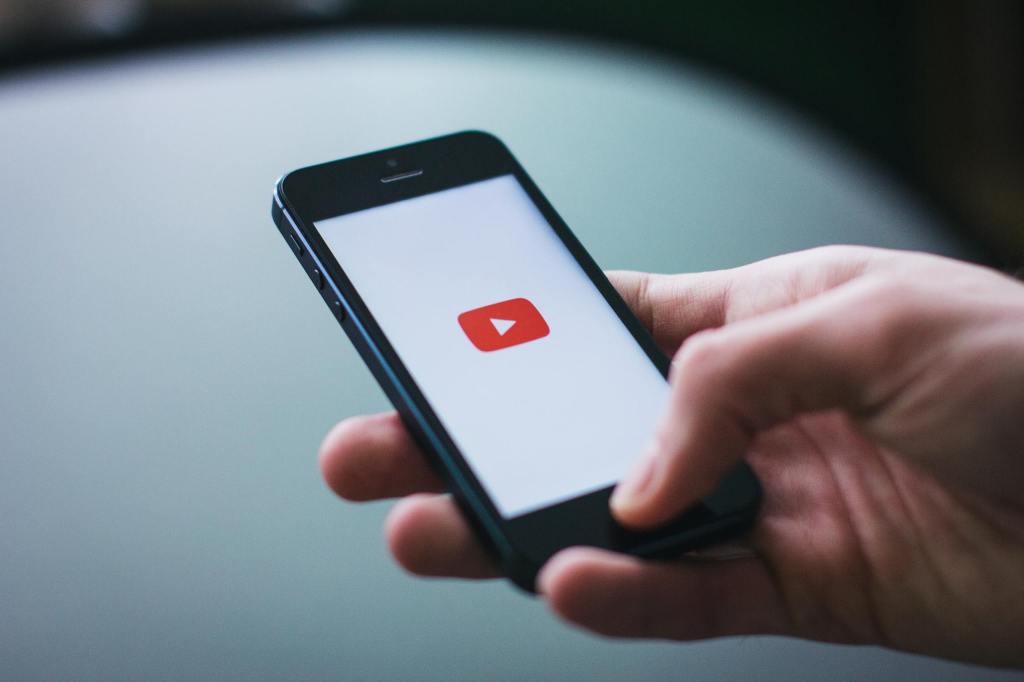
YouTube, in 2020, was largely seen as a platform for content creators with niche audiences—be it vloggers, reaction videos, or how-to tutorials. YouTube was an essential medium for self-expression, but it hadn’t yet fully solidified itself as a dominant mainstream media force.
By 2025, YouTube has gone through a transformation, becoming a mainstream entertainment powerhouse. The pandemic of 2020 accelerated this shift, as many turned to YouTube for news, education, entertainment, and even fitness during lockdowns. In 2025, the platform has evolved into a more centralized hub of influence, with major corporate sponsorships, political content creators, and even news organizations leveraging the platform for reach.
This transformation has led to debates about the monetization of creators, content censorship, and how platforms are being used to both amplify voices and suppress others.
22. Veganism, Animal Rights, and Work Culture: 2020 vs. 2025

Veganism in 2020 was considered a progressive choice, largely advocated by a small subset of people passionate about animal rights, health, and environmental concerns. By 2025, however, veganism has become more mainstream, with plant-based options becoming readily available at restaurants and supermarkets. As the global debate on climate change deepens, many view plant-based diets as part of a solution to reduce carbon footprints and combat factory farming.
Likewise, animal rights have taken on a more central role in discussions about ethics, as documentaries like "The Cove" or "Blackfish" continue to raise awareness about the treatment of animals in zoos, aquariums, and factory farms. By 2025, attitudes toward animals are shifting towards an ethical treatment paradigm, but issues like lab-grown meat and factory farming ethics remain controversial.
In 2020, work culture was primarily defined by the hustle culture—where work was tied to one's identity and success was defined by hours worked and productivity. However, the Great Resignation and quiet quitting movements in 2025 have revealed a shift in priorities. People now reject the idea of workaholism, valuing mental health and personal life more than before. Job-hopping is normalized, and the corporate world is grappling with a post-pandemic redefinition of work-life balance.
23. The Pandemic: Vaccine Conspiracy Theories and the Lab Leak Theory

In 2020, the COVID-19 pandemic led to an explosion of conspiracy theories regarding the origins of the virus, with some claiming it was a bioweapon, while others believed it was intentionally spread. Similarly, vaccine conspiracy theories flourished, with people claiming that the vaccine was unsafe, untrustworthy, or part of a larger agenda.
Fast forward to 2025, and while many conspiracy theories remain on the fringe, some of these claims now carry an element of credible investigation. For example, the lab leak theory—originally dismissed as unfounded—has gained traction due to new scientific studies and intelligence reports suggesting that it is a plausible explanation for the virus’s origins. Similarly, vaccine injuries that were previously considered anomalies are now being analyzed by the scientific community, and while the vaccine remains effective in preventing severe illness, some evidence has emerged that suggests long-term health effects that were previously unknown.
Conclusion:

The contrast between 2020 and 2025 isn’t just a matter of political shifts or cultural upheaval—it's a reflection of a world struggling to reconcile its past, present, and future. From a society grappling with the aftermath of a global pandemic to one now navigating geopolitical instability, emerging technologies, and cultural polarization, the changes we’ve witnessed over the last five years have been seismic.
Yet, these shifts also reveal something deeper about the human experience. Our struggles with identity, power, truth, and freedom are not new—they’ve simply evolved with the times. Whether it's in the form of a shifting political landscape, the rise of new forms of media, or the growing prominence of new technologies, 2025 presents us with a world at once both unsettling and brimming with potential.
As we move forward into the next phase of this journey, we must ask ourselves: What have we learned from these past five years, and how can we navigate the complexities of the world that lies ahead? Only time will tell, but one thing is certain: the world will continue to change, and we must decide how we will respond to it. Will we continue to engage in the cycles of division, or will we work toward building a more cohesive, understanding society? The choice is ours to make.
Comments